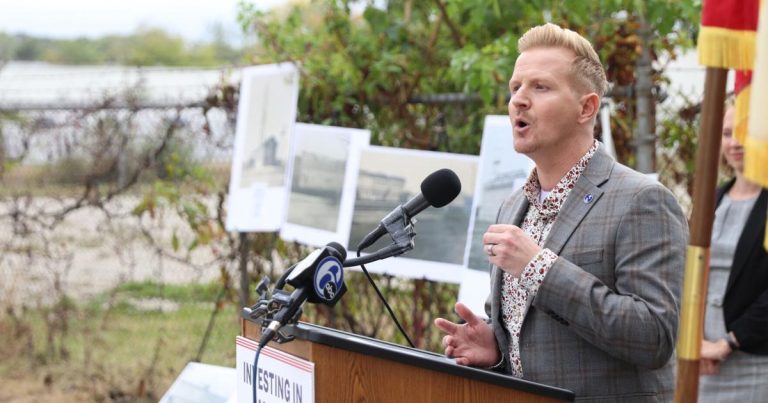New Jersey’s Proposed Inland Flood Protection Rule Sparks Heated Debate Amidst Allegations of Misinformation
TRENTON, NJ – A contentious battle is brewing in New Jersey over proposed inland flood protection rules, with the state’s environmental chief, Shawn LaTourette, asserting that misinformation is fueling much of the opposition. The new rules, designed to mitigate the increasing risks of inland flooding exacerbated by climate change, have been met with a wave of resistance from local officials and residents who fear economic hardship and unnecessary burdens. LaTourette, however, argues that these fears are largely based on misinterpretations and deliberate distortions of the proposed regulations, emphasizing the critical need for updated standards to protect lives and property in the face of escalating flood threats.
The proposed rules, which are part of the state’s Protecting Against Climate Threats (PACT) initiative, aim to address the evolving nature of flood risk in New Jersey. They would expand flood hazard areas beyond traditional floodplain boundaries to encompass areas projected to be at risk in the coming decades due to rising sea levels, increased precipitation, and more intense storms. These changes would require new construction and substantial improvements in designated flood-prone areas to be elevated to higher standards, effectively acknowledging the increased likelihood and severity of future flooding events. Proponents argue that these measures are essential for long-term resilience, minimizing the devastating impact of future floods on communities and reducing the costs of recovery.
However, the proposed rules have sparked significant pushback, particularly from municipalities and developers who contend that the expanded flood zones and elevated building requirements will stifle economic growth and place undue financial strain on property owners. Many local officials have voiced concerns that the regulations will deter development and lead to a decrease in property values, potentially impacting tax revenues and hindering economic recovery. Some residents have also expressed concerns about the affordability of elevating homes and the potential disruption to existing communities. Public hearings have been marked by passionate pleas from residents and officials urging the Department of Environmental Protection (DEP) to reconsider the proposed changes.
LaTourette counters that much of the opposition is rooted in misinformation and a lack of understanding of the proposed rules. He emphasizes that the regulations are not intended to stop development but rather to ensure that new construction and renovations are resilient to future flood risks. The DEP has stressed that the rules will not impact existing structures unless substantial improvements are made, and that financial assistance and mitigation options will be available to help homeowners comply with the new standards. Furthermore, LaTourette points to the long-term economic benefits of proactively addressing flood risks, arguing that the costs of inaction far outweigh the upfront costs of implementing the new regulations. He cites the devastating impacts of recent storms like Hurricane Ida as evidence of the urgent need to strengthen flood protection measures.
The DEP maintains that the updated flood maps and regulations are based on the best available science and reflect the reality of a changing climate. They argue that failing to adapt to these changes will only lead to greater economic losses and human suffering in the future. The department has also highlighted the importance of incorporating climate change projections into land-use planning and development decisions to ensure the long-term sustainability and resilience of New Jersey’s communities. To address concerns and clarify misunderstandings, the DEP has embarked on a comprehensive public outreach campaign, holding numerous public hearings and providing detailed information on the proposed rules online and through community engagement efforts.
The debate over the proposed flood protection rules highlights the complex challenges of balancing environmental protection, economic development, and community needs in the face of climate change. As New Jersey continues to grapple with the increasing impacts of extreme weather events, the implementation of effective flood mitigation measures will become increasingly critical. Whether the proposed rules will ultimately be adopted in their current form remains to be seen, but the ongoing dialogue underscores the crucial need for informed public discussion and collaborative solutions to address the growing threat of inland flooding in the state. The outcome of this debate will undoubtedly have significant implications for the future of development and resilience in New Jersey.


